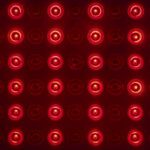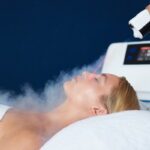How can photobiomodulation help relieve pain?

Photobiomodulation (PBM) is an innovative technique that uses lasers or light from LEDs to improve an individual's well-being and help manage certain conditions. PBM is distinguished by its non-invasive approach, and can help alleviate chronic pain or fracture-related pain, for example.
Photobiomodulation: principles and operation
Photobiomodulation relies on the use of red and infrared lights to stimulate biological processes in the body's cells. PBM sessions involve exposing painful areas to devices emitting these lights, triggering a series of beneficial biochemical reactions.
PBM devices use LEDs and lasers to emit light at specific wavelengths. These wavelengths penetrate the skin and reach the underlying tissues, where they are absorbed by mitochondria, the cells' energy powerhouses. This absorption of light increases cellular energy production (ATP) and promotes cell regeneration, thus reducing inflammation and pain.
The benefits of photobiomodulation for pain relief
Photobiomodulation can be effective in relieving various types of pain, such as :
- Muscle pain: PBM sessions can reduce muscle pain caused by exercise, injury or chronic tension. Infrared light penetrates deep into muscle tissue, improving blood circulation and reducing inflammation.
- Tissue damage: PBM helps manage symptoms associated with tissue damage, whether caused by sports injuries, surgery or trauma. The anti-inflammatory and analgesic effects of red light contribute to faster recovery.
- Joint pain: photobiomodulation is used to alleviate joint pain, particularly that caused by arthritis. Regular sessions can reduce discomfort and improve mobility in affected joints.
- Neuropathic pain: people suffering from neuropathic pain, which is often difficult to treat, can benefit from PBM sessions. Infrared light helps to regulate nerve responses and reduce the sensation of pain.
Mechanisms of action of photobiomodulation
The effects of photobiomodulation on pain can be explained by several biological mechanisms:
- Stimulation of ATP production: red and infrared light stimulate ATP production, increasing the energy available for cell repair and regeneration.
- Reduced inflammation: PBM lowers levels of pro-inflammatory cytokines, thereby reducing local and systemic inflammation.
- Improved blood circulation: infrared light improves vasodilation and microcirculation, bringing more oxygen and nutrients to damaged tissue.
- Modulation of nerve responses: photobiomodulation can regulate the activity of neurons, attenuating pain signals sent to the brain.
Advantages of photobiomodulation over other approaches
Photobiomodulation offers several advantages over traditional pain management approaches:
- Non-invasive technique : unlike some medical procedures, PBM is non-invasive, requiring no incisions or surgery.
- Absence of major side effects: PBM sessions are generally well tolerated, with few or no side effects. This contrasts with analgesic drugs, which can cause significant side effects.
- Versatility: PBM can be used for a wide range of pains and conditions, including muscular, joint and neuropathic pain.
- Short, practical sessions: PBM sessions are relatively short and can be easily integrated into care routines, whether in the clinic or at home.
Photobiomodulation sessions: what to expect?
Photobiomodulation sessions are relatively simple. Here are some of their features:
- Duration: a typical session lasts between 10 and 30 minutes, depending on the area treated and the condition to be managed.
- Frequency: sessions can vary from several times a week to once a month, depending on individual needs.
- Procedure: the patient sits comfortably and the light source (laser or LED) is positioned close to the area to be treated. The light is then applied, without pain or discomfort.
- Results: results may vary according to the condition being treated and individual response to light. Some may experience improvements after just a few sessions.






